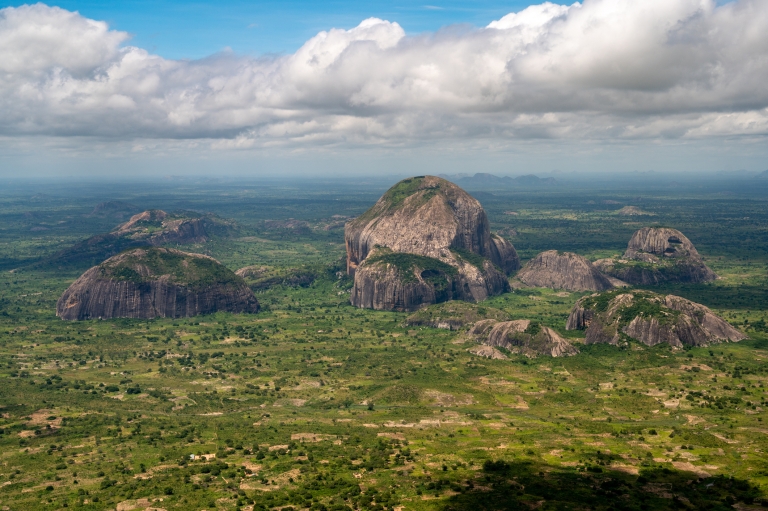A B1/B2 visa is a non-immigration visa that enables foreign nationals to enter the U.S. for business, pleasure, or both, typically for up to 180 days. B visas remain valid for up to 10 years after the issue date.
The B1 visa component caters to business-related travel, such as attending conferences, negotiating contracts, or consulting with business associates. However, B1 visa holders are prohibited from engaging in gainful employment or receiving remuneration from U.S. sources.
The B2 visa is designed for tourism, vacation, or visiting friends and family. It also covers certain medical treatments and participation in social or amateur sporting events.
The flexibility of the B1/B2 visa allows holders to engage in both business and pleasure activities during their stay in the U.S.
For global organizations and HR professionals, understanding the B1/B2 visa is crucial when considering short-term international assignments or business trips for employees. It provides a legal framework for temporary business activities without requiring more complex work visas.
Purposes and benefits of the B1/B2 visa
The B1/B2 visa serves as a gateway for international visitors to engage in short-term activities in the U.S.
This dual-purpose visa offers flexibility and convenience for travelers—B1/B2 holders can expect to enjoy the following benefits:
- Travel purpose flexibility. The B1/B2 visa allows holders to seamlessly transition between business and leisure activities during their stay in the U.S. This versatility is particularly advantageous for professionals who wish to extend their business trips for personal exploration or combine work-related events with vacation time.
- Easy re-entry. Typically, individuals can repeatedly re-enter the U.S. without having to reapply for another visa (although this can vary depending on their country of origin and the border patrol (CBP) officer’s discretion). For business travelers and global professionals, a B1/B2 visa simplifies ongoing collaborations and recurring visits.
- Possibility for extension. Under certain circumstances, B1/B2 visa holders may apply for a six-month extension of their stay. This option provides flexibility for those needing additional time to complete their business activities or extend their visit.
- Long validity period. B1/B2 visas are often valid for up to 10 years, depending on reciprocity agreements between the U.S. and the traveler’s home country. This extended validity reduces the administrative burden of frequent visa renewals for regular visitors.
- A broad range of permissible activities. The B1/B2 visa covers a wide range of activities, from attending business meetings and conferences to participating in cultural events and seeking medical treatment. This variety accommodates diverse travel needs without requiring multiple visa types.
- Streamlined application process. The B1/B2 visa application process is generally more straightforward than that for work visas. This efficiency is particularly beneficial for businesses that need to mobilize employees quickly for short-term assignments or meetings.
- Global networking opportunities. For professionals, the B1 component facilitates attendance at international conferences, trade shows, and business meetings. This fosters global connections and knowledge exchange, which is crucial in today’s interconnected business landscape.
Eligibility requirements for a B1/B2 visa
Applicants must meet the following requirements to obtain a B1/B2 visa:
Travel intent
B1 applicants must provide proof of the business purpose of their trip. The following are acceptable reasons for travel:
- Business consultations. Professionals may need a B1 visa to meet with clients or business associates located in the U.S.
- Conference attendance. These conferences can be educational, scientific, etc., for which applicants should provide receipts or tickets.
- Handling an estate. B1 visas enable holders to manage inherited property in the U.S.
- Professional licensing. Applicants must provide information about the required tests, licenses, etc., they are seeking.
B2 applicants must justify their personal visits or medical treatments. The following are all valid reasons to obtain a B2 visa:
- Tourism. Those seeking to travel should provide travel itineraries or planned destinations.
- Education. Individuals who plan to take a course for less than 18 hours a week can apply for a B2 visa. However, this course cannot be used for credit toward a degree.
- Participating in amateur events or sports. So long as the event is not professional and the visa holder is not paid for participation, individuals can typically use a B2 visa.
- Visiting family or friends. B2 visas are often used to visit loved ones in the U.S.
- Medical referrals. Those explicitly seeking medical treatment must also supply information about their condition, treatment plan, and the medical facility they plan to visit.
It should be noted that Canadian and Bermudian citizens usually do not need a visa to enter the U.S. for tourism purposes, though both nationals face differing requirements depending on whether they plan to immigrate, invest, work, or study.
While the B1/B2 visa offers considerable flexibility, it’s crucial to understand its limitations. Certain activities require specific visa categories and are not permissible under a visitor visa.
For instance, individuals pursuing academic studies in the U.S. must obtain a student visa, such as an F-1 or M-1. Employment and paid performances need work visas like the H-1B or O-1. Those arriving as crewmembers on ships or aircraft require C-1 visas.
Foreign press, radio, film, or print journalism professionals must secure an I visa for media-related work in the U.S. For those intending to establish permanent residence, immigrant visas are the appropriate route.
Intent for temporary travel
Applicants must prove strong ties to their home country and that their stay in the U.S. will only be temporary. This can be evidenced through family connections, property ownership, or pending work commitments. Also, applicants should be prepared to provide proof of residence outside the U.S. and any ties that will ensure their return abroad.
Financial stability
Applicants must prove they can financially support themselves for the duration of their stay as they cannot earn income from any U.S.-based businesses. Proof of stability may include bank statements, sponsorship letters, or other financial documents.
Supporting documents
Applicants must be prepared to provide the following:
- Passport valid for at least six months beyond intended stay
- Visa application fee payment receipt
- Completed Form DS-160 (online non-immigrant visa application)
- Recent passport-sized photo that meets U.S. visa photo requirements
- Employment verification documents showing current employment or business commitments in the home country
- Detailed travel itinerary (while not always required, it can help demonstrate the purpose and temporary nature of the visit)
Applicants must have a clean criminal record. Those between the ages of 14 and 79 must also attend a visa interview, stating their travel intent and showing the above documents.
For individuals seeking medical treatment in the U.S., additional documentation is necessary, including a diagnosis from a local physician, a letter from a U.S. medical facility, and proof of ability to pay for treatment. Depending on nationality, some applicants may need to pay a visa issuance fee upon visa approval.
Lastly, Chinese citizens with 10-year B1, B2, or B1/B2 visas must enroll in the Electronic Visa Update System (EVUS).
Application process for a B1/B2 visa
The B1/B2 visa application process can be rigorous. Applicants should pay close attention to all requirements to facilitate approval. Consider the following steps as a guideline for the application process.
Step 1: Complete the DS-160 form
Applicants must complete the DS-160 form online to provide personal and travel details, a passport photo, and, for B1 applicants, employment details.
Applicants should save their final confirmation code, which will be needed in the following steps.
It’s crucial to ensure all information provided in the DS-160 form is accurate and consistent with supporting documents. Any discrepancies could lead to delays or potential visa denials.
Step 2: Pay the visa application fee
As of 2024, the government filing fee for a B visa is US$185. Payment methods vary depending on the applicant’s country, and applicants must keep the receipt for their visa interview.
The visa application fee is non-refundable, even if the visa is denied. In some countries, applicants may need to pay additional reciprocity fees based on agreements between their home country and the U.S.
Step 3: Schedule visa interview
Applicants will need to schedule and attend an interview at their nearest Consulate or U.S. Embassy.
Wait times for interview appointments can vary significantly depending on the location and time of year. Some U.S. Embassies and Consulates offer expedited appointment services for emergencies or urgent business travel.
It’s recommended to schedule the interview well in advance of planned travel dates to account for potential processing delays.
Step 4: Prepare supporting documents
B1/B2 visa applicants should come prepared with a comprehensive set of supporting documents to strengthen their application. The cornerstone of these requirements is a valid passport, which should remain valid for at least six months beyond the intended stay in the U.S. This ensures that travelers have a valid travel document for their return journey.
In addition to the passport, applicants must submit proof of payment for the visa application fee and their completed Form DS-160. A recent passport-sized photo meeting U.S. visa photo requirements is also essential. To demonstrate ties to their home country and the temporary nature of their visit, applicants should provide employment verification documents showing their current employment or business commitments in their home country.
While not always mandatory, a detailed travel itinerary can significantly bolster an application. This document helps illustrate the purpose and temporary nature of the visit, providing consular officers with a clear understanding of the applicant’s intentions during their stay in the U.S.
Step 5: Attend the visa interview
Applicants should be prepared to answer the following:
- The reason behind visiting the U.S.
- What ties they have to their home country
- How they will finance their trip
It is critical that applicants answer questions clearly and concisely. The main reasons for visa denials include vague travel intent and a lack of clarity regarding ties to the applicant’s home country.
To make a positive impression and increase the chances of approval, applicants should dress professionally and arrive punctually. They should be prepared to interview in English, as it may not be offered in their native language. Applications should speak for themselves and avoid bringing family members unless absolutely necessary (e.g., minors applying for high school programs).
Consular officers typically take fingerprints during the interview. They might also follow up with applicants after the interview to request additional documents or information to help them make an informed decision.
If a visa application is denied, it’s wise to prepare a respectful response that shows the applicant has alternative plans.
Step 6: Wait to receive a visa
Applicants will receive approval, denial (for which a reason will be supplied), or administrative processing, which requires additional time.
The wait time for a B1/B2 visa can vary widely, with some approvals coming as soon as seven days and others taking more than two years. Wait times have grown longer since COVID-19—the median worldwide wait time in 2022 was two months. Certain applicants can apply for expedited visa processing.
Wait times for B1/B2 visas can vary due to multiple factors, including the specific U.S. embassy or consulate processing the application, seasonal demand fluctuations, and whether the applicant is interviewing outside their home country.
Additional influences include current geopolitical situations, application volumes, staffing levels at U.S. diplomatic posts, policy changes, and the complexity of individual cases. Given that wait times can change rapidly and without notice, applicants should regularly check the U.S. Department of State’s website for the most up-to-date information and plan their application process accordingly.
B1/B2 visa vs. B1 visa
B1 visas are intended for short work visits to the U.S. Visa holders cannot travel to the U.S. merely for tourism purposes.
On the other hand, the B2 visa is known as the “tourist visa.” It is designed for those who want to visit family, attend social events like music festivals or sports matches, or generally travel the U.S.
Typically, these visas are issued together as the B1/B2 visa, which is more flexible than the B1 visa alone as it allows for more freedom in travel. As of March 2023, B1 and B2 holders can attend interviews and apply for jobs within the U.S.
While B1/B2 visas can be valid for up to 10 years, visitors are generally permitted to stay in the U.S. for a maximum of six months per visit. Both B1 and B2 visa holders must be self-supported and cannot receive payments for any business conducted in the U.S., though honoraria may be permitted in certain circumstances.
FAQs about the B1/B2 visa
Understanding the requirements and limitations of the B1/B2 visa is crucial for seamless international business and tourism travel. Here are essential answers to common questions to help global professionals and employers understand the scope and restrictions of this visa category.
What is the maximum stay on a B1/B2 visa?
Typically, B1/B2 visa holders are given up to six months or 180 days for their initial visit. Upon arrival in the U.S., CBP officers will note the exact number of allowable days on Form I-94 Arrival/Departure Record. Under certain circumstances, visa holders can apply for an extension of up to six months.
Note that not all holders are issued the maximum stay period, as CBP officers determine this duration.
Can B1/B2 visa holders work in the U.S.?
No, B1/B2 visa holders cannot work in the U.S. The B1/B2 visa is a non-immigrant visa, which means it cannot be used for work or receiving payments from a U.S.-based organization.
If visa holders do engage in unauthorized work, they might face the following consequences:
- Visa cancellation
- Deportation
- Denial of future visas
However, B1/B2 visa holders can interview for jobs within the U.S. and try to secure a work visa if they wish to stay and work there.
It’s important to note that the prohibition on work extends to remote work for foreign employers while in the U.S., as well as unpaid volunteer work or internships. Even activities that might seem innocuous, such as giving lectures or participating in short-term training programs, could violate B1/B2 status if they involve compensation or subsidized expenses.
B1/B2 visa holders should ensure they have adequate financial arrangements for their stay without relying on any form of work.
Is the B1/B2 visa renewable?
No, the B1/B2 visa is not technically renewable. Holders cannot renew their visas once their old visa expires. However, those interested can go through reapplication.
The steps for reapplication are similar to applying for a completely new B1/B2 visa, though some applicants may qualify for faster processing by obtaining a visa interview waiver—so long as they have no history of visa violations or denials.
It’s important to distinguish between the visa expiration date and the authorized period of stay. Even if a B1/B2 visa is still valid, visitors must adhere to the duration of stay granted by the CBP officer upon entry, typically up to six months. Overstaying this period can result in serious consequences, including future visa ineligibility.
For frequent travelers, the validity period of a B1/B2 visa can extend up to 10 years, depending on reciprocity agreements between the U.S. and the visitor’s home country. Multiple entries are generally permitted during this validity period, making reapplication unnecessary for regular visitors who comply with visa terms.
What if a B1/B2 visa holder needs to stay longer?
Extensions are issued on an as-needed basis by the U.S. Citizenship and Immigration Services (USCIS). Those interested in an extension must apply at least 45 days before their authorized stay ends. B1/B2 visa holders must provide a valid reason for extension, such as:
- Needing additional medical treatments
- Unfinished client meetings
- Handling of an estate is incomplete
- Other unforeseen circumstances
Depending on the visa holder’s reasoning, the USCIS can grant an extension of up to six months.
Those seeking a longer stay should be aware that applying for an extension does not guarantee approval, and applicants must be prepared to leave the U.S. if their request is denied. The processing time for B1/B2 visa extensions can vary depending on the USCIS workload and individual circumstances.
While waiting for a decision, applicants must maintain their legal status and avoid engaging in any unauthorized work. If approved, the extension will relate back to the date the original Form I-94 expired, ensuring continuous lawful status during the application process.
Simplify B1/B2 visa applications with Velocity Global
Guiding an employee through a B1/B2 visa application process can be complex, and the stakes are high—one misstep could lead to a months-long setback. Having the proper guidance can make the difference between getting an employee to a work conference or a client meeting—or not.
The B1/B2 visa process can be complex for an applicant or their employer to navigate. As a leading employer of record (EOR), Velocity Global helps businesses and their workforce navigate the ins and outs of immigration, relocation, and mobility by offering visa support and global coverage to transfer talent to 185+ countries for temporary or permanent needs.
Learn more about our integrated global immigration services and how we help businesses hire, pay, relocate, and retain global talent with speed and compliance.
Disclaimer: The intent of this document is solely to provide general and preliminary information for private use. Do not rely on it as an alternative to legal, financial, taxation, or accountancy advice from an appropriately qualified professional. © 2025 Velocity Global, LLC. All rights reserved.



